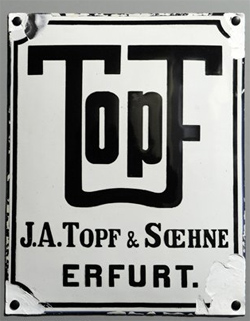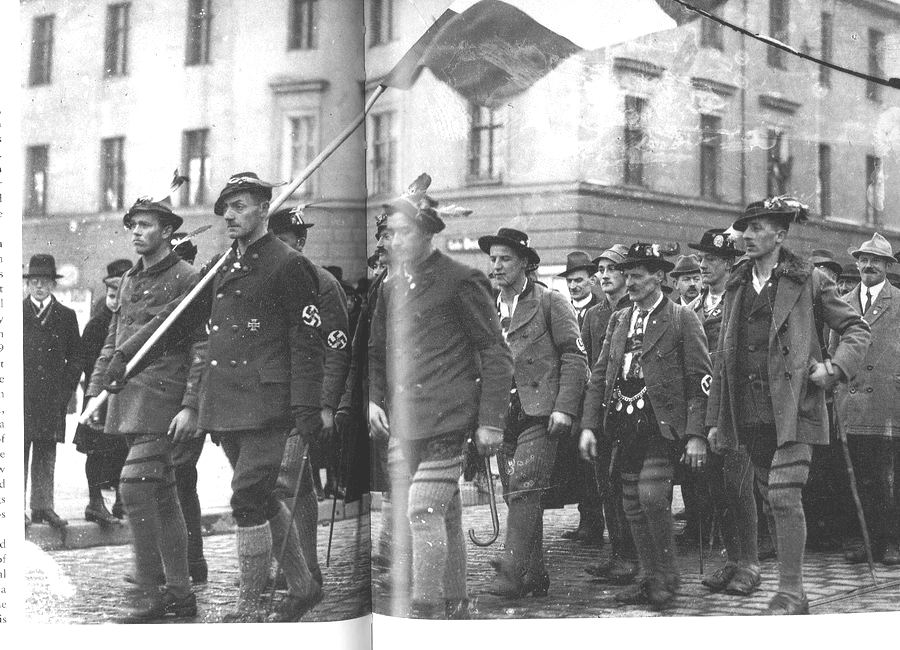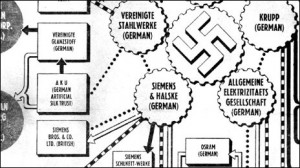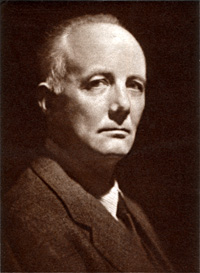Alex Constantine - February 9, 2011
A man stands in the exhibition 'The Engineers of the 'Final Solution' Topf & Sons - Builders of the Auschwitz Ovens' after a press conference in Erfurt, central Germany, on Tuesday, Jan. 25, 2011. The memorial site and educational center to open this week on International Holocaust Remembrance Day documents the role played by a German maker of crematoria in the mass execution of Europe's Jews and others. Hitler's top men dreamed up the horrors of the Holocaust, but without the support of German engineers and industrialists like Topf & Sons, they would never have succeeded in murdering millions. Through technology developed and products built in the Topf & Sons factories, Auschwitz was equipped with four crematoria that resembled factories where as many as 8,000 corpses could be burned in a day. The exhibit opens Thursday. (AP Photo/Jens Meyer)
By Jens Meyer (CP) | January 26, 2011
 ERFURT, Germany — A new memorial is opening in Germany that examines the role played by educated professionals such as the engineers and architects who created the crematoria ovens for Auschwitz to help carry out the Holocaust.
ERFURT, Germany — A new memorial is opening in Germany that examines the role played by educated professionals such as the engineers and architects who created the crematoria ovens for Auschwitz to help carry out the Holocaust.
The exhibit is housed in the former administrative building of the Topf & Sons company that collaborated with Hitler's SS to design and construct special ovens to meet the demands of the death camps. It opens to the public on Thursday, the day of international Holocaust remembrance.
Using original blueprints, letters from the Nazi SS, and other documents, the exhibit shows how a "normal" German company, based in the central city of Erfurt, knew and took pride in its role of designing a crucial part of the killing machinery.
"The story is so unique but so universal," said curator Rikola-Gunnar Luettgenau. "Nowhere else is it possible to see the overreaching bridge between daily life under the Nazis and the monstrosity of Auschwitz."
Visitors entering the grey, four-story building that in the 1930s and 40s housed the company's administrative offices are greeted with the Topf & Sons motto from the World War II era: "Always glad to serve you ..."
Founded in 1878 to build heating systems, by 1914 the company had become the leader in building incineration devices. Topf & Sons first began supplying Hitler's SS with corpse incineration ovens in 1939 for use in the Buchenwald, Flossenbuerg and Dachau concentration camps.
Two years later, they applied for a patent for a "continuous-operation corpse incineration oven for mass use," knowing the Nazis would use the ovens to dispose of corpses of Jews, Gypsies and others murdered en masse in the gas chambers of Auschwitz-Birkenau.
Once inside, pictures of the Nazi-era production site, the company's logo and other artifacts greet visitors as they make their way to the exhibit, where blueprints showing the proportions of pipes and bricks of an oven are displayed in an otherwise bare room. Stark, unrenovated walls and exposed supporting beams create a sense of the company's cold efficiency.
The company also supplied ventilation and exhaust systems for the gas chambers. Engineers from the company visited Auschwitz-Birkenau "at least a dozen times," according to information in the exhibit. By 1943, Topf & Sons had equipped the death camp with four crematoria where as many as 8,000 corpses could be burned in a day.
The original ovens, still bearing the Topf & Sons emblem, can be seen in the camps. On display in the exhibit are 701 urns made by the company that were delivered to Buchenwald. The remains they contained were buried in the camp before the urns went on display.
Pawel Sawicki, a spokesman at the Auschwitz state museum in Poland, said such memorials are an important part of Holocaust remembrance because they show the role played by educated and skilled people far from the death camps.
"We, of course, commemorate the victims, but we must also take into consideration the group of perpetrators — that there were people who engaged their knowledge, their time, their education, in order to make it work," Sawicki said. "You are not a simple person if you build a crematorium. You need to have a university degree, you need to be an architect. There are plenty of technical problems to solve and so on."
The site also includes an education centre aimed at high school and university students. Through critical examination of the company history they will be able to discuss questions of ethics in business and the use of technology.
___
Eddy reported from Berlin. Vanessa Gera contributed to this report from Warsaw, Poland.
http://www.google.com/hostednews/canadianpress/article/ALeqM5gdis1kRbp4_A3aGaP4Tvyj2ZKoFA?docId=5762998







